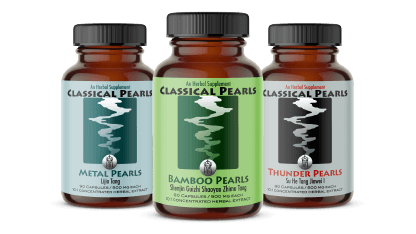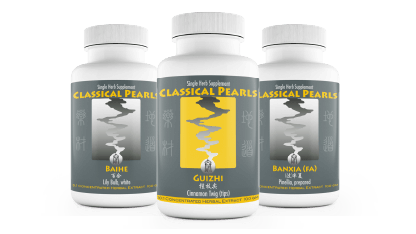About Xiao Chaihu Tang
Xiao Chaihu Tang has traditionally been regarded as the representative formula of the so-called harmonizing method of herbal therapy. It was first introduced 1,850 years ago as the most important remedy for shaoyang pathologies in Zhang Zhongjing’s classical prescription manual, Discourse on Disorders Caused by Cold (Shanghan lun). Due to its wide range of clinical applicability, Xiao Chaihu Tang has since evolved to become one of the most frequently prescribed Chinese formulas of all time. Since the shaoyang layer is defined as the space in between surface and interior, and since the Triple Warmer and Gallbladder networks govern the circulation of qi and fluids throughout the entire body, the range of pathologies associated with this formula is extremely broad. Typically, symptoms occur along the Gallbladder channel on the side of the body, and at pivotal “in between” locations such as the throat, the subcostal plane, or the inguinal region. Although the popularity of this formula relates in part to its reputation as a safe and “harmless” remedy, many scholar physicians have warned throughout the ages that Xiao Chaihu Tang should only be prescribed when clear indications for shaoyang pathology in general and the distinctly defined symptoms for this remedy in particular are evident. Zhang Zhongjing himself, however, did point out that “not all of the defining symptoms have to be there at the same time, one of them will suffice.”
Therapeutic Principles
- Release shaoyang layer
- Harmonize surface and interior
- Realign Liver and Spleen
- Restore proper ascending and descending
- function of digestive qi
Formula Ingredients
| CHINESE | PINYIN | COMMON NAME; PAOZHI (PROCESSING) | AMOUNT |
| 柴胡 | Chaihu | Bupleurum | 29.11% |
| 黃芩 | Huangqin | Scutellaria | 10.91% |
| 半夏 (法制) | Banxia | Pinellia; lime cured | 15.14% |
| 黨參 | Dangshen | Codonopsis | 10.91% |
| 生薑 | Shengjiang | Ginger, fresh | 10.91% |
| 大棗 | Dazao | Jujube | 12.11% |
| 甘草 (棗花蜜炙) | Zhi Gancao | Licorice; jujube flower honey baked | 10.91% |
Xiao Chaihu Tang Usage
Companion Remedies
SUITABLE FOR COMBINING
Similar Remedies
ALSO BUPLEURUM AND/OR PINELLIA BASED AND THUS AFFECTING THE SHAOYANG NETWORK AND RELATED METABOLIC, ENDOCRINE, AND MENTAL FUNCTIONS; ALTERNATION OPTIONS
| HERITAGE SERIES | LEGACY SERIES |
| Chaihu Guizhi Ganjiang Tang | Ease Pearls |
| Chaihu Jia Longgu Muli Tang | Release Pearls |
| Banxia Xiexin Tang | |
| Wendan Tang |
Supplement Facts
- Serving size: 3 capsules
Servings per contains: 30
Amount per serving: 1500mg
*Proprietary blend containing pure herbal extracts of:
Bupleurum chinense root (Chaihu), Pinellia ternata rhizome cured (Banxia Fa), Ziziphus jujuba fruit (Dazao), Scutellaria baicalensis root (Huangqin), Codonopsis pilosula root (Dangshen), Zingiber officinale fresh rhizome (Shengjiang), Glycyrrhiza glabra root honey baked (Zhi Gancao)
* % Daily value not established
Other ingredients: Bentonite clay, vegetable capsule






